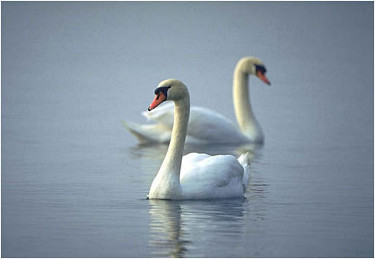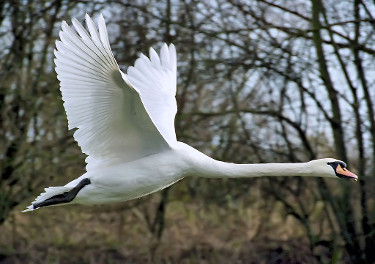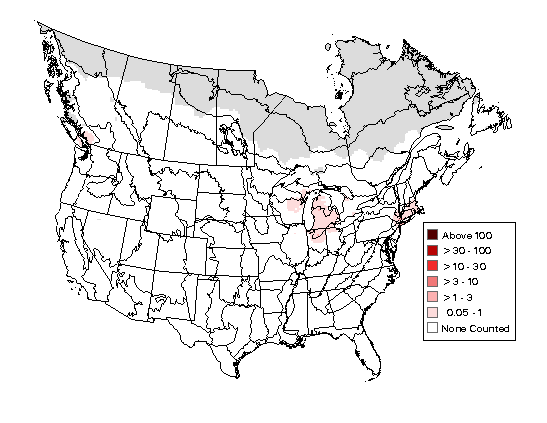Mute Swan

Mute Swan Information
Length: 58 - 60"
Habitat: Lakes, ponds (including park ponds), coastal bays, marshes, and other wetland areas. Requires habitat with plentiful aquatic vegetation and large areas of shallow water.
Diet: Mostly aquatic vegetation and algae. Some aquatic insects and crustaceans.
Additional Information
Mute SwanPhotos of this bird, habitat, weight, length, diet, identification, range, reproduction, and management. (From Wildlife in Connecticut)
Photo of Mute Swan Family
From Mike Danzenbaker's Bird Photography
Mute Swan in Flight

By Adrian Pingstone via W. Commons
Mute Swan
Identification Tips
- Large, long-necked waterbird with short legs and a short duck-like bill
- Long neck held in distinctive "S" curve at rest
- Orange bill with black base, lores and knob above bill
- Black legs and feet
- Entirely white plumage
- Fluffy back feathers
- Female has smaller bill knob
- Sexes similar
(Credit: U. S. Geological Survey)
Breeding Bird Survey Map,
2011-2015

(Image credit: USGS)
Range in New England
The Mute Swan is breeds locally in northern New England, especially along the coast, and more abundantly in Massachusetts, Connecticut, and Rhode Island.
Some Mute Swans winter on their breeding grounds However, if inland breeding lakes and ponds freeze over, they may migrate to the coast or a short distance further south.
Year-round Map from eBird
Year-round sightings of the Mute Swan (1900-present)
Christmas Bird Count Map
Historical CBC Map from USGS